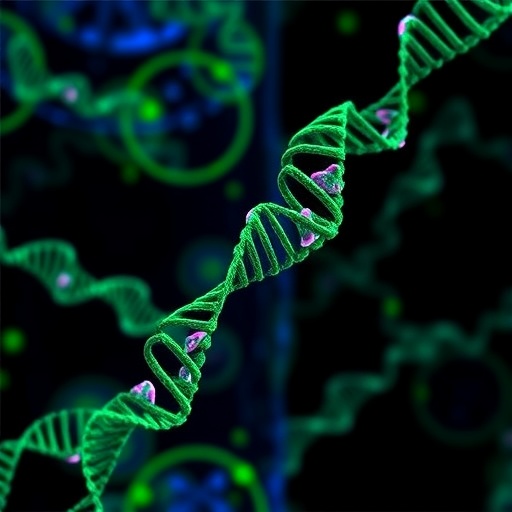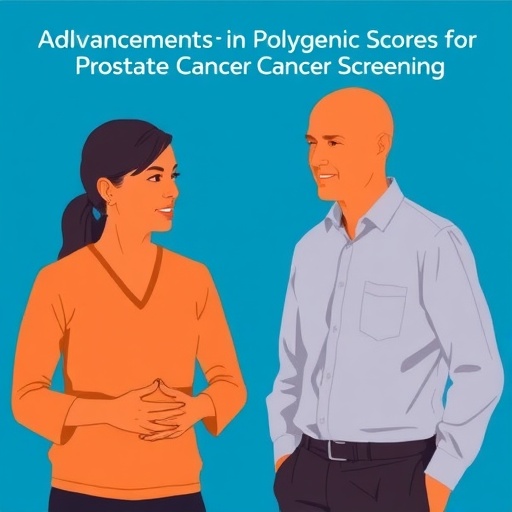
In recent years, the intricate relationship between autophagy and long non-coding RNAs (lncRNAs) has emerged as a critical avenue in understanding the progression and treatment of hepatocellular carcinoma (HCC), the most common form of primary liver cancer. Autophagy, a cellular degradation and recycling process essential for maintaining homeostasis, plays a complex dual role in cancer biology. It can both suppress tumor initiation by eliminating damaged organelles and proteins and promote tumor survival under metabolic stress by providing nutrients. The convergence of autophagy with lncRNA regulation provides an unprecedented view into the molecular underpinnings of HCC and opens potential therapeutic windows that warrant urgent attention from researchers and clinicians alike.
Pharmacological modulation of autophagy stands at the forefront of innovative treatment strategies for various diseases, including cancer, neurodegeneration, and metabolic disorders. Targeting key regulators of autophagy presents an opportunity to tilt the balance between tumor cell survival and death. The mammalian target of rapamycin (mTOR) pathway is a central negative regulator of autophagy. Pharmacological agents such as Rapamycin and its analogs—Everolimus (RAD001), Deforolimus, and Temsirolimus—act by inhibiting mTOR, thereby stimulating autophagic processes. Preclinical studies using patient-derived HCC xenografts have demonstrated dose-dependent tumor growth inhibition by RAD001, highlighting the potential of mTOR inhibitors in HCC treatment. Despite promising laboratory findings, clinical trials like the Phase III Everolimus study faced recruitment challenges, leaving definitive therapeutic conclusions elusive.
Expanding beyond mTOR, activation of AMP-activated protein kinase (AMPK) presents an alternative route for autophagy induction. AMPK serves as an energy sensor, inhibiting mTOR while activating Unc-51 like autophagy activating kinase 1 (ULK1), thus promoting autophagy initiation. Metformin, widely prescribed for type 2 diabetes mellitus, has garnered attention for its anticancer properties related to AMPK activation. Notably, metformin also induces autophagy and apoptosis through AMPK-independent pathways, collectively exerting tumor-suppressive effects. Clinical advances are ongoing, with Phase II trials assessing the efficacy of combined metformin and sorafenib therapy in HCC patients. Such combination strategies underscore the growing recognition that multitargeted approaches may overcome the limitations inherent to monotherapies.
.adsslot_d42wCUQ9V6{width:728px !important;height:90px !important;}
@media(max-width:1199px){ .adsslot_d42wCUQ9V6{width:468px !important;height:60px !important;}
}
@media(max-width:767px){ .adsslot_d42wCUQ9V6{width:320px !important;height:50px !important;}
}
ADVERTISEMENT
Sirtuins, particularly sirtuin-1 activators like Resveratrol, further enrich the arsenal of autophagy inducers. Resveratrol’s ability to stimulate mitophagy—the selective autophagic removal of damaged mitochondria—occurs through complex molecular axes such as MALAT1/miR-143-3p/RRM2. This targeted clearance helps to mitigate oxidative stress, a known promoter of tumor progression in HCC. The therapeutic implication of such findings is profound, as they reveal specific regulatory networks that can be pharmaceutically manipulated to hinder hepatocarcinogenesis.
Lysosomal targeting, an essential aspect of the autophagy machinery, offers an intriguing pharmacological strategy with dual action potentials: enhancement or inhibition of autophagic flux. On one hand, agents like trehalose facilitate lysosomal clearance, thus promoting the degradation phase of autophagy and supporting tumor-suppressive effects. On the other hand, lysosomal inhibitors such as chloroquine and bafilomycin A1 operate by elevating lysosomal pH or inhibiting acidification, respectively, effectively blocking autophagosome-lysosome fusion. The disruption of this final step in autophagy can sensitize cancer cells to chemotherapeutics, as lysosomes commonly sequester drugs, leading to resistance. Combining lysosome-targeting compounds with standard chemotherapies hence represents a promising avenue to overcome inherent drug insensitivity in HCC. Notably, chloroquine and hydroxychloroquine have advanced into early-phase clinical trials as adjuvants in solid tumors, including HCC.
Despite tremendous progress in autophagy modulation, inhibitors targeting upstream regulators such as phosphoinositide 3-kinase (PI3K) and autophagy-related genes (ATGs) remain largely in preclinical stages. Wortmannin, a widely recognized PI3K inhibitor, exemplifies the complexity of selectively dampening autophagy to impair tumor survival. Similarly, inhibitors targeting Beclin-1, a core autophagy initiator, show promise in experimental models but require extensive clinical validation. The delicate balance these pathways maintain in cellular homeostasis necessitates precision medicine approaches to avoid unwanted cytotoxicity.
In parallel with pharmacological development, the realm of molecular biomarkers has witnessed significant strides through the study of lncRNAs. These non-coding transcripts, once dismissed as transcriptional noise, now emerge as powerful regulators of gene expression influencing cancer biology from epigenetic modulation to post-transcriptional control. In HCC, autophagy-related lncRNAs demonstrate robust potential as diagnostic and prognostic indicators. Bioinformatics-driven predictive models encompassing panels of lncRNAs—such as PRRT3-AS1, RP11-479G22.8, and LINC01138—have shown substantial accuracy in stratifying patient risk and predicting outcomes. These insights suggest lncRNA signatures could revolutionize personalized medicine in liver cancer.
Further expanding the biomarker paradigm, immune-autophagy-related lncRNAs, including BACE1-AS, MIR210HG, and CYTOR, have been correlated with patient survival, reflecting the intricate interplay between autophagy, immunity, and tumor evolution. It is increasingly clear that these lncRNAs not only serve as passive indicators but may actively contribute to tumor growth and proliferation, thus representing dual-function biomarkers. Tumor suppressor lncRNAs like NBR2 inherently influence autophagy pathways, where low NBR2 levels portend poorer survival, underscoring their prognostic relevance. Conversely, oncogenic lncRNAs such as HULC facilitate tumor progression, positioning them as attractive targets for intervention.
Apart from their prognostic promise, lncRNAs are implicated in post-surgical recurrence—a critical concern in HCC management. Elevated expression of lncRNAs like HOTTIP after liver transplantation has been identified as an independent risk factor for recurrence, highlighting the need for vigilant monitoring. Similarly, MALAT1 and HOTAIR lncRNAs correlate with early relapse following surgical resection, suggesting their utility in stratifying patients for adjuvant therapies.
One of the most challenging hurdles in HCC therapy is the development of chemoresistance, particularly against sorafenib, the standard first-line molecular targeted agent. Emerging data implicate lncRNAs as key regulators in this resistance. Inhibition of SNHG1 suppresses Akt signaling, thereby enhancing apoptosis and autophagy and mitigating resistance. SNHG16 promotes resistance via downregulation of tumor-suppressive miR-140-5p, which otherwise inhibits cancer migration and invasion. NEAT1 functions via multiple axes, including NEAT1/miR-335/c-met and NEAT1/miR-204/ATG3, modulating autophagy-related pathways to confer sorafenib insensitivity. These findings collectively signal that targeting lncRNAs may resensitize tumor cells, optimizing existing treatments’ effectiveness.
The growing body of literature underscores an urgent need to transcend traditional therapeutic approaches by integrating autophagy biology with the regulatory landscape of lncRNAs. Such convergence presents a multifaceted strategy, simultaneously exploiting vulnerabilities in cancer cell survival mechanisms and gene expression regulation. However, clinical translation faces significant challenges, including tumor heterogeneity and the diverse computational methods employed in lncRNA profiling, which can complicate biomarker standardization and applicability.
Future perspectives envision combining autophagy modulators with lncRNA-targeting agents, potentially creating synergistic interventions that curtail HCC progression more effectively than either approach alone. The complex feedback loops between autophagy and lncRNAs also present novel avenues for biomarker discovery, enabling real-time monitoring of therapeutic responses and disease trajectory. Bridging preclinical insights with rigorous clinical trials will be paramount to realize these prospects fully.
In conclusion, the intertwined roles of autophagy and lncRNAs signify a paradigm shift in understanding hepatocellular carcinoma’s molecular etiology and treatment. While pharmacological modulation of autophagy offers pathways to disrupt tumor survival, lncRNAs provide both a molecular window into disease mechanisms and a target-rich environment for novel diagnostics and therapeutics. As research moves forward, these dual drivers promise to refine precision oncology for HCC, illuminating paths toward improved patient outcomes and durable remissions in a notoriously aggressive malignancy.
Subject of Research: Hepatocellular carcinoma progression driven by long non-coding RNAs and autophagy mechanisms.
Article Title: Long non-coding RNAs and autophagy: dual drivers of Hepatocellular carcinoma progression.
Article References:
Goyal, H., Kaur, J. Long non-coding RNAs and autophagy: dual drivers of Hepatocellular carcinoma progression. Cell Death Discov. 11, 376 (2025). https://doi.org/10.1038/s41420-025-02667-7
Image Credits: AI Generated
DOI: https://doi.org/10.1038/s41420-025-02667-7
Tags: autophagy and hepatocellular carcinomaautophagy’s dual role in cancerinnovative therapies for liver cancerlong non-coding RNAs in liver cancermTOR inhibitors in hepatocellular carcinomamTOR pathway in cancer treatmentpharmacological modulation of autophagypreclinical studies on liver cancer treatmentsrole of lncRNAs in cancer biologytargeting tumor cell survival mechanismstherapeutic strategies for liver cancer managementtumor microenvironment and HCC progression





